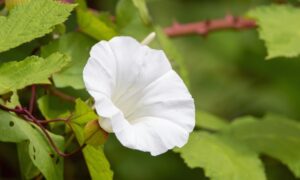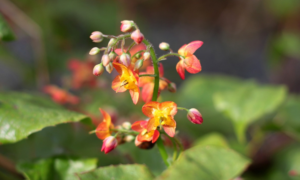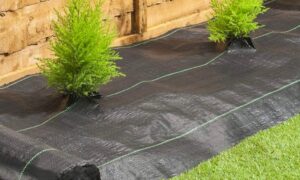We independently research, review, and recommend the best products. If you buy something through our links, we may earn a commission. Learn more.
Identifying even the most common weeds can be a challenging endeavour – even for experienced gardeners. Dangerous weeds can often look surprisingly similar to desirable plants, and certain weeds may even look different at various stages of their lifecycle, making it all the more challenging to know what you’re dealing with.
With this in mind, it’s vital for gardeners of all levels to learn about the characteristics of the most common garden invaders. If you fail to take swift action against pesky weeds, they can quickly take over the area, undoing your hard work and damaging the ecosystem.
Given the complexities involved in identifying and preventing weeds, we’ve taken a look at the most common garden scourges found in the UK. Read on to find out how to spot, manage and prevent the six most prevalent weeds found in British gardens.
Contents
Chickweed (Stellaria media)
Chickweed is an annual weed that will be familiar to most gardeners. It has bright green, shiny leaves that are arranged in pairs, as well as small white flowers, each containing a single seed.
You’ll be able to identify chickweed by its small, star-shaped white flowers that tend to appear in clusters. It’s important to spot it as early as possible since chickweed is notorious for taking over gardens if you give it half a chance. My approach to identifying chickweed is simply to keep an eye out for its distinctive flowers. Once identified, I try to control it with herbicides or by pulling it out by hand.

To prevent the growth of Chickweed, I always advise spreading pre-emergent herbicides – they tend to do the trick. Alternatively, you could put up physical barriers such as landscape cloth to help block its growth.
Ragwort (Senecio jacobaea)
Ragwort is one of the most difficult weeds to manage. It can be spotted by its yellow flower heads which tend to grow in clusters on stems. Since they often grow as tall as 90cm, you shouldn’t have a hard time spotting them. The leaves are also deeply divided and have a fuzzy texture.

Ragwort can reproduce rapidly and spread quickly through wind and water dispersal. Since it’s known to contain toxic chemicals, preventing the growth and spread of Ragwort is particularly important if you live near livestock.
Over the years, I’ve developed some steps you can take to keep your garden Ragwort-free. The first step I always take is to make sure the area is free of weeds and debris by removing fallen leaves. It might sound simple, but it’s actually very effective. Next, I take a proper look at the health of the soil. To maintain good soil fertility and a healthy pH balance, you can add organic matter – like compost or mulch – to the area.
An additional step you can take is to add pre-emergent herbicides to the area, or use a physical barrier, like a landscape cloth, to help block the growth of ragwort.
But if you’re still struggling, and the Ragwort has already spread, it’s best to simply dig out the weed’s root by hand.
Couch (Elymus repens)
Couch, or Elymus repens, is a perennial weed that’s common in the UK. You can spot it by its long, narrow leaves with pointed tips, and fleshy rhizomes that form dense mats of grass.

Couch has a shallow root system, meaning it can spread easily in both grassy areas and disturbed soils. To identify this menace in your garden, look for bright green foliage, with pointed tips on each blade, along with thick mats of grass that can form large clumps.
If left uncontrolled, couch can spread rapidly and crowd-out more desirable plants and vegetation. In my experience, there are three ways to manage couch. Start by using herbicides, or mulches to block it’s growth. And if that doesn’t work, you may have to pull out the weed by hand.
Nettles (Urtica dioica)
We’ve all, at one time or another, been the victim of a nettle sting. These pesky perennial weeds are common throughout the UK, and as most gardeners will attest, they can be difficult to manage.
Nettles have hollow stems and leaves that are covered in small hairs, which contain irritating chemicals that can sting if touched. Nettles prefer nitrogen-rich soils and moist conditions, and can easily spread in disturbed soils.

To identify nettles in your garden, look out for their tall stems covered with leaves arranged in pairs. Nettles can be difficult to control due to their fast-spreading tendencies, so the best way to prevent their growth is to keep the area free of weeds and debris, and dig up the roots if necessary.
As with managing most garden weeds, it’s essential to maintain proper soil fertility and pH balance by adding mulch or compost. You can also apply pre-emergent herbicides or pull out the plants by hand before they have a chance to spread.
Goosegrass (Galium aparine)
Goosegrass is an annual weed that grows throughout the UK. You’ll be able able to spot it by its bright green foliage and slender stems with pointed seeds at the end of each branch.
Goosegrass prefers sandy and clay-based soils, as well as moist conditions. To identify goosegrass in your garden, look for yellowish-green foliage, slender stems with pointed tips, and seed heads which may appear in clusters.

Goosegrass is a weed that has to be properly managed, and you can control it by using pre-emergent herbicides, hoeing, or hand-pulling. And don’t forget that simply keeping the area free of weeds and debris can also help to prevent its growth.
One of the best ways, though, to prevent the growth of goosegrass is to mow regularly. This will help to reduce the amount of germinating seed, as well as create a dense turf that can help suppress weed growth. You can also look to improve soil drainage and fertility by applying compost, mulch and pre-emergent herbicides. But whatever you do, be sure to keep the soil moist. Goosegrass prefers drier conditions.
Creeping thistle (Cirsium arvense)
Creeping thistle is a perennial weed that can be one of the most problematic for gardeners. It has upright stems with spiny leaves and purple flower heads that you’ll find clustered at the top of the plant. To find out whether you have creeping thistle in your garden, simply look for spiny leaves that are rounded at the base, clustering flower heads, and hollow, upright stems.

Creeping thistle is a dangerous weed because it has very sharp spines that can cause skin irritation if touched. It can also pose a significant threat to your garden’s ecosystem by crowding out desirable plants and depriving them of essential nutrients. What’s more, creeping thistle also has the ability to reduce soil fertility.
Creeping thistle also contains toxic properties that may be harmful to livestock if ingested, leading to liver damage, neurological disorders, and even death. It’s therefore essential to take preventative measures to manage and control the spread of this common garden weed.
Creeping thistle is notoriously difficult to control due to its long-term growth and spread. The best way to manage it is to dig out the roots, use herbicides, or even burn the plant. We also recommend applying pre-emergent herbicides to prevent growth before it’s hand a chance to spread.






